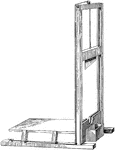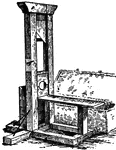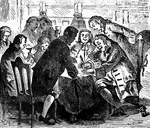Clipart tagged: ‘execute’

Execution of Egmont and Horn
An illustration of two men, Egmont and Horn, being executed by beheading.

Guillotine
The guillotine was a device used for carrying out executions by decapitation. It consists of a tall…

Guillotine
An illustration of a guillotine which was a device used to carry out executions by decapitation. Guillotines…

Guillotine
(1.) The guillotine is an instrument employed for the purpose of decapitation. It was officially introduced…

Joseph in Prison with the Cup-Bearer and the Chief Baker
"And Pharaoh was wroth against his two officers, against the chief of the butlers, and against the chief…

Sloughter Signing the Death-Warrant
Colonel Sloughter signing the order to execute two rebels. According to popular lore, Sloughter was…